Support strong Canadian climate journalism for 2025
I was going up river with an Elder, Georgie Moses. And as we were driving up the river, we came by a creek on our way up to his cabin. There was a moose standing in that creek watching us. It was about two or three years old, just a young one, and he kind of nodded at that moose and we kept going. When we sat down in his cabin, he lit up a cigarette and he asked me: “Did you see that moose standing in that creek?” And I said yes. He said, “You know, that moose has stood in that creek my entire life.” And I thought about it in that moment, I was confused. That moose was two or three years old. How could it be there his whole life? And then I understood what he meant. There was always moose standing in that creek — generations of moose. And he said, “If we rip that creek up for gold or any of that business, we will lose those moose forever.” And in that statement, he spoke about the balance of industry and nature and where his values were and that’s what’s so important. How do you add an economic value to one of our children pulling a salmon out of the river?
— Chief Dana Tizya-Tramm, Vuntut Gwitchin First Nation
For centuries, survival in the North has depended on natural, sustainable energy provided by the land and water. For this reason, these remote lands are giving life to something remarkable in the modern age: a growing green energy revolution that defies all odds.
Most northerners rely on fossil fuels to survive and pay absurdly expensive energy bills to do so. But many of us are only a couple of generations apart from living entirely off the land. We still hold knowledge on how to live sustainably. Most Indigenous northerners still subsist on traditional foods like caribou, even in urban centres like Yellowknife and Whitehorse. Teepees are still constructed to hang fish to dry over smouldering fires. Indigenous languages are still spoken, keeping legends alive in the land of endless aurora-filled skies above the deepest of waters — two of the largest lakes in the world, Great Slave Lake and Great Bear Lake, bordering the Arctic Ocean.
The motivation to pair green energy with these cultural ways of knowing and living is strong, as northern Indigenous communities plow through the last of the Industrial Revolution. The Arctic is particularly vulnerable to climate change because of its sensitive cryosphere and is warming at three times the global rate. Arctic sea ice has steadily dropped 13 per cent per decade since 1979.
Aside from the environmental effects, the rising cost of crude oil could provide the impetus for northerners to switch from diesel to green energy at long last. The shift to clean energy means many will be able to survive in a cheaper, more sustainable way — and the Vuntut Gwitchin community, 795 kilometres from Whitehorse, is a prime example.
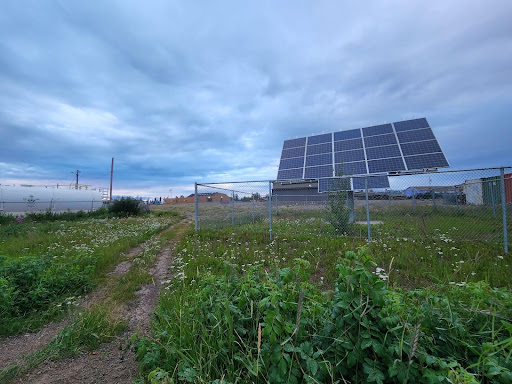
Nearly a decade in the making, a solar farm called Sree Vyah in Yukon — built in partnership with the nearby municipality of Old Crow — is proof renewable energy is viable anywhere. Sree Vyah (which means “Old Crow” in the Gwitchin language) is an independent power producer (IPP). It is legally authorized to sell power it produces to users and also to the public utility — the “grid.”
Yet even though he received political approval from the Yukon government, Chief Dana Tizya-Tramm still followed traditional protocol and listened to the Elders in the community before planning where to set up the solar farm. The Elders were initially concerned about the proposed site, fearing it would interfere with an accessible berry patch that had long provided food for the nation. To address that food security problem, it was promised the berry patches would continue to grow between the solar panels. Tizya-Tramm laughs happily in hindsight when he says, “Now I find that such a beautiful juxtaposition where you have the berries, which is where our people derive their sustenance from.” Both forms of technology complement one another for the betterment of the environment and the berries are growing more abundantly than ever with the heat coming off the solar arrays, says Tizya-Tramm.
Tizya-Tramm recalls the day in August 2021 when the solar farm switched on. “A silence fell over the community for the first time and you could hear a raven caw from the other side of town,” he said, when I spoke to him last year just after the panels got up and running. That silence is a welcome departure from the loud roar of constant diesel burning. And it will continue except for the coldest months of November through February when the diesel generators will be needed to supplement the solar power. The 2,160 single-sided mono-crystalline panels maximize solar generation during daylight hours working alongside a 616 kW battery storage system and microgrid controller, as explained in a 2021 Vuntut Gwitchin news release.
Before the solar farm was up and running, Vuntut Gwitchin purchased electricity from the massive energy utility ATCO at approximately 78 cents per kilowatt hour. Today, the nation is selling to ATCO at 64 cents per kilowatt hour, diverting more than $400,000 a year back into the community. Although Vuntut Gwitchin still purchases some diesel for backup, solar is something the community can bank on.
But it wasn’t easy getting there. Vuntut Gwitchin First Nation had to push the Yukon government for regulatory changes to move forward. The government eventually forced ATCO to the negotiation table where after a year, Chief Tizya-Tramm walked away with what he wanted — a green light for independent power production for his community.
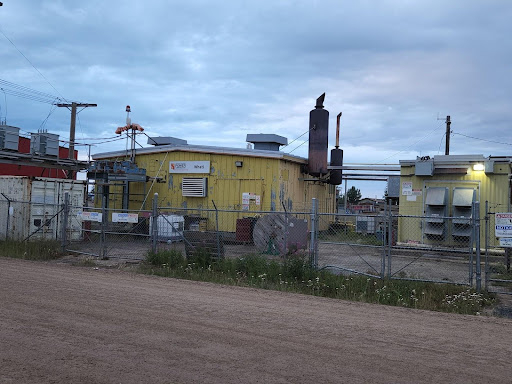
Now that it has proven success in solar energy, the community is looking at other ways to become greener. The nation has set an ambitious goal to reach carbon neutrality by 2030. Along with solar, it is studying the feasibility of biomass energy, where a species of aggressive willow could be harvested and burned to create electricity. Tizya-Tramm estimates a designated six-kilometre swath of land could provide at least five years of heat. By the time they circle back to where they started to cut, the willows will have renewed and be good for harvesting again, he says hopefully.
While Yukon moves forward with the transition from oil and gas to green energy, its neighbours in the Northwest Territories still face barriers. N.W.T. has a 20 per cent cap on green energy and other regulatory impediments.
The only way large N.W.T. power users can procure green energy is by signing power purchase agreements with the Northwest Territories Power Corporation (NTPC). There is no mechanism for a community to set up an IPP or sell surplus energy back to the public utility.
Many First Nations across the country already have independent power producer status. In the North, Yukon has had an independent power producer policy since 2015 and Qulliq Energy, which provides power to communities in Nunavut, launched its own program this year, leaving the N.W.T. behind the pack in allowing Indigenous communities full autonomy over power production.

Excuses for why the N.W.T. is not anywhere close to an IPP are speculative, at best. Some, like outgoing Chief Stanley Sanguez of Jean Marie River First Nation, believe money is more important to the government than the environment. It’s “greed versus survival,” he said.
“They used our communities. Gas prices, tobacco, alcohol are the three major factors that the government makes revenue off.” It begs the question, will the future of green energy also fall into this category?
There are others who say the barriers are due to safety concerns if there is no backup system in place when equipment malfunctions. Then there is the practical economic reasoning — IPPs can mean added expenses for some power customers. “The sun doesn’t always shine and the wind doesn’t always blow,” as Darrell Beaulieu, CEO of Denendeh Investments, said over the phone from Yellowknife, N.W.T., last spring. Individual off-grid living can be affordable for some, but not for others, he said. And when some customers leave the grid, power prices in urban areas for those who remain go up because the fixed costs are spread among a smaller customer base, Beaulieu said.
A 2010 NTPC panel review states: “As with any new technological development, developing new power generating systems (such as hydro projects) is often expensive and risky. At the end of the day, it is the customer who usually has to pay for the project.” Keeping rates low means cutting costs in other areas, such as employee wages, which Beaulieu says creates instability in the system. Fear that the power corporation could be undermined if forced to purchase power from First Nations could very well explain N.W.T.’s resistance to IPPs.
Yet, the sheer cost of importing fossil fuels into the territory and the emissions from the use of diesel to heat and power communities illustrate the need for alternatives. The N.W.T. is a serial emitter of carbon, with nearly every community either running on diesel or using it in backup generators alongside hydroelectricity. There are residents in the territory who have opted to set up their own off-grid energy sources — which, in turn, raises power rates for customers still on the grid.
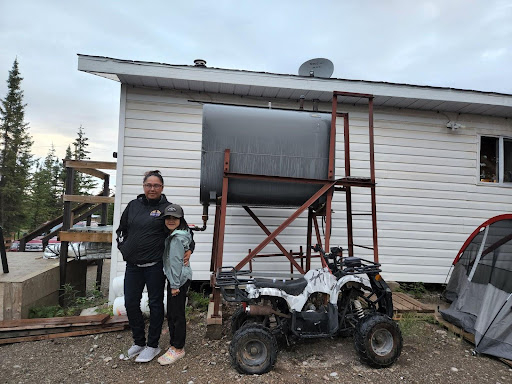
Northern residents like Samantha Migwi bear the brunt of the high costs. Migwi’s been a resident of Whatı̀, N.W.T. since 2010 and is a Tłı̨chǫ citizen. “We are a very outdoorsy family,” she said when I visited her home this summer. Migwi and her husband have a cabin 20 minutes from Yellowknife by Ski-Doo in the winter and 20 minutes by boat in the summer. “We’re there at least once or twice a month just to enjoy, away from the cell service.” Their eventual plan is to retire and live there fulltime. For now, they are renters and utilities are not included. Together, Migwi says their power, fuel and water total almost $6,000 during winter months. That amount alone is more than Migwi’s rent for the two-bedroom house. Thankfully, she says, both her and her husband have good-paying jobs.
To keep busy in the long, cold winter months in Whatì, community members play Hand Games, a traditional yet still-popular sport involving hiding and guessing objects using elaborate hand signals and gestures. It’s a loud competition where the sound of drums and cheering spill out of packed gymnasiums. One of those gymnasiums is heated with biomass. The Tłı̨chǫ government was able to set up its own system because it is one of two self-governing nations in the N.W.T. They write their own legislation and have executive powers to make economic decisions without Canadian government involvement, so in that sense, they are an independent power producer in their own right.
Even though biomass is not exactly the pinnacle of renewable energy, it is a small start in the right direction, a test run. And while it’s not helping people like Migwi reduce her power bills, it is helping the community overall to show that collective action is possible and money normally spent on heating the heart of the community can be freed up to be spent elsewhere. At some point, biomass might be able to heat every home in the small community.
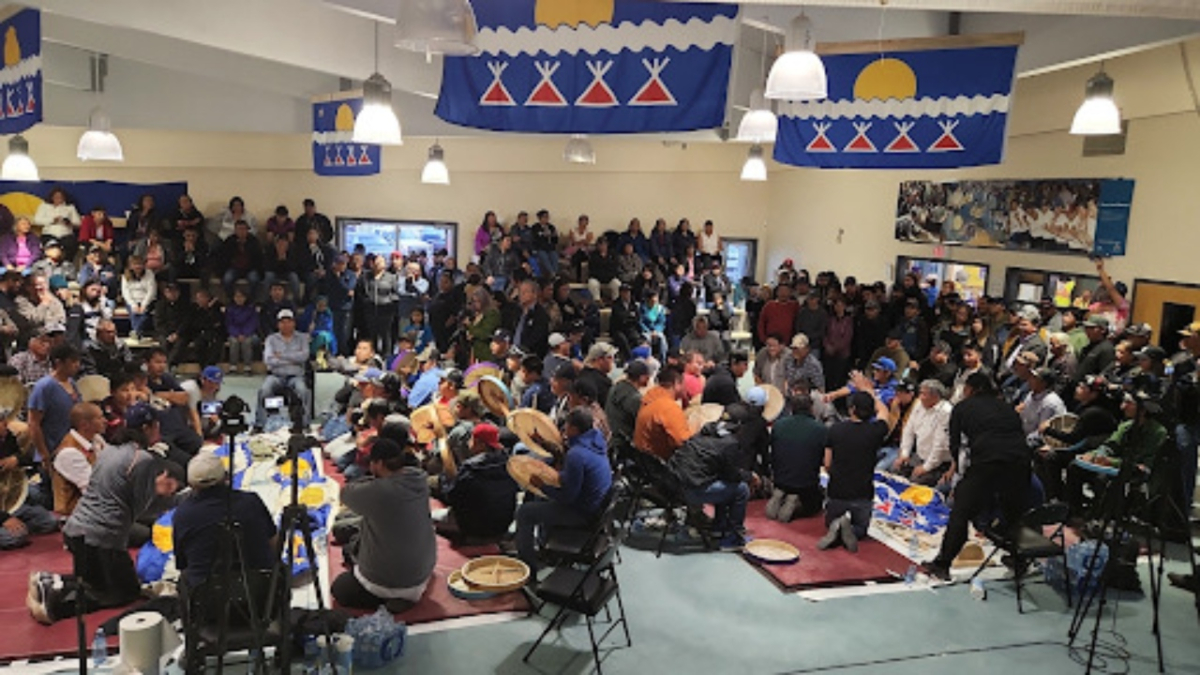
It’s Alphonse Nitsiza’s job to keep the community warm. I caught up with Nitsiza at one of Whatì’s Hand Games tournaments to mark the 100th anniversary of the signing of the Tłı̨chǫ Agreement after driving the long and windy gravel road into the community and arriving later than expected. Although it was dusk, Nitsiza graciously agreed to show me the biomass facility. Still sporting his handmade Dene vest, Nitsiza left the tournament to meet me at the plant. Nitsiza moved back to his birthplace three years ago after living in Behchoko for the past 22 years. He’s been superintendent of Public Works for the Whatı̀ Community Government since his return. Nitsiza runs the biomass facility, maintaining it and shutting it down in the summer months. He and his team clean it once or twice a week, depending on how cold it gets. He is also teaching his co-workers what to do if there is ever a malfunction and he is not available.
Nitsiza regularly stands outside in the cold cleaning the ashes for about 15 to 20 minutes, but most of the equipment is tucked inside a small sea can where the pellets are also stored. It takes about two truckloads of pellets to heat the facility for the entire winter from September to May, and in the summer season, it is shut off completely, explained Nitsiza. Now that there’s a winter road, they can call for pellets on demand instead of worrying about running out and having to wait between orders, Nitsiza said.

The N.W.T. government funded the groundwork for the plant, paying for trenching and purchasing special equipment. Since then, four buildings have been connected to the source: the urban building, fire hall, garage and nursing station. The nursing station now purchases heat from the Tłı̨chǫ government and the community is able to sell it at a subsidized rate.
The charges are estimated with a metering system run through an online app. Currently, the community is saving approximately 10 per cent of its total heating costs through the installation of the biomass system. But so far, only the larger buildings can be connected because it costs too much to connect individual homes.

Money was not always a necessary factor for everyday living and it doesn’t have to be now. My grandmother was born in a teepee tent in 1925 and grew up living entirely off the land. Every day, she and her 15 siblings helped to haul wood and chips through three feet of ice on the frozen lake to draw water for bathing and drinking. The cracks in her log home were filled with moss as an insulator. Her father was an expert trapper, and furs kept her warm. Her freezer was a hole in the year-round permafrost that naturally kept food cool in summer subarctic temperatures. She comes from a long line of strong matriarchs. Her great-grandmother delivered letters far and wide by dog team and was named a National Historic Person in Canada for her strength, perseverance and love of family. She is known as the Ehtsu Naats’i, meaning Grandmother of the Winds.
For centuries, survival in the North has depended on self-sustainability, and it can still, through efforts to bridge the old and the new and living off-grid cash-free by harnessing the elements.
People like Nitsiza are doing the work, gaining satisfaction from knowing they are helping to improve their community. Nitsiza grabs his coffee every morning, goes to the shop and meets with the guys to see what needs to be done for the day. Outside his office window, he sees a vibrant, growing community.
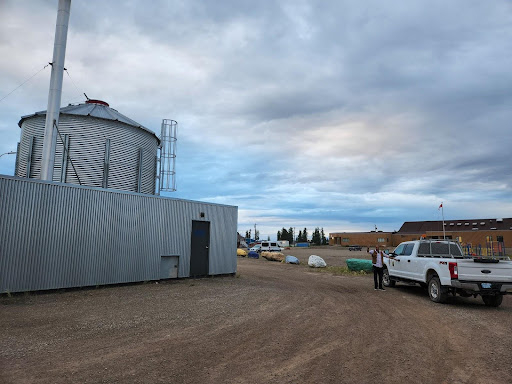
He knows it will change even more in the future. For now, it’s balancing tradition and technology, past and future to gain self-sufficiency. By ditching diesel and moving to renewable resources, he knows his community will thrive in a way that meshes with Indigenous principles of caring for the environment.
Katłįà (Catherine) Lafferty is a northern Dene/Cree/Métis novelist, freelancer and columnist. She is a member of the Yellowknives Dene First Nation from Somba K’e (Yellowknife), Northwest Territories. She currently resides on the occupied and unceded lands of the Coast Salish peoples in lək̓ʷəŋən territory, where she is in her fourth year of the Juris Doctor in Common Law and Indigenous Legal Orders with the University of Victoria.
This story was produced through Journalists for Human Rights' Solutions Journalism Program and the Indigenous Media Collaborative, supported by the McConnell Foundation.

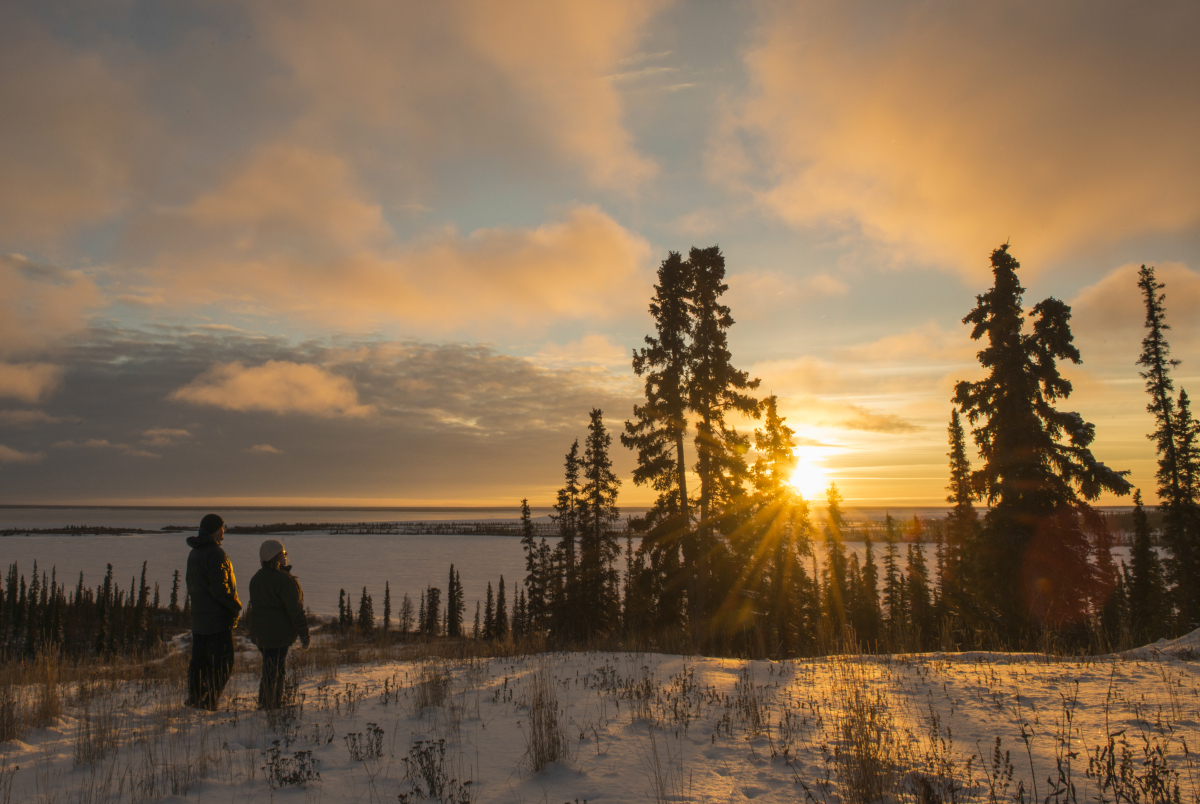




Comments